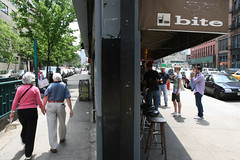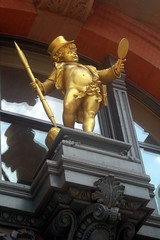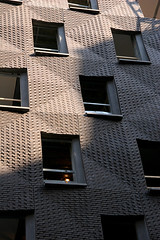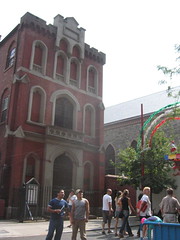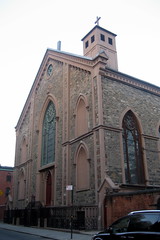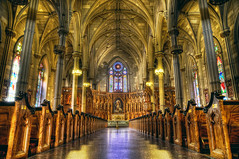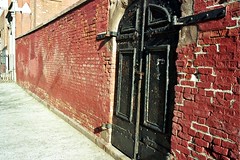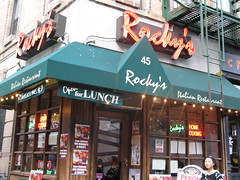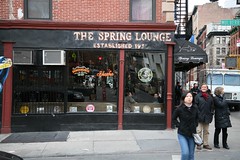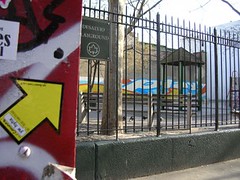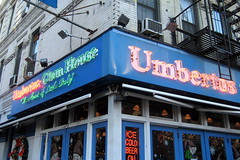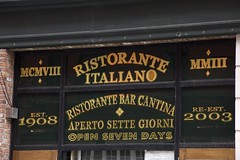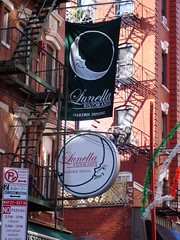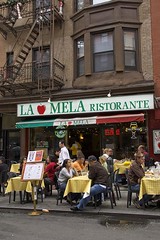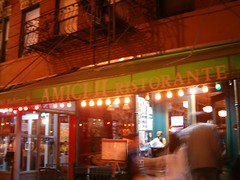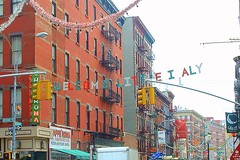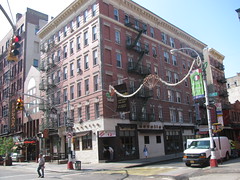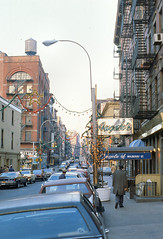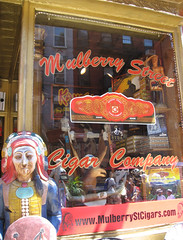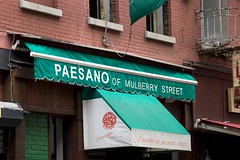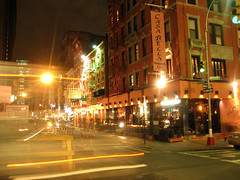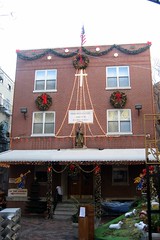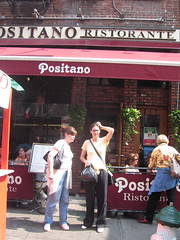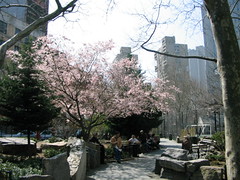West:
185-189 (corner):
Banca Stabile, a bank
operated by the Stabile family, operated out of 189 from
1882 until 1932, serving as the neighborhood's
financial center. It was something of a time capsule
until 2008, when it became home to a museum of
Italian immigration.
151: Il Palazzo (''The Palace''); the
food is as good as Il Cortile's, according to
Zagat--and a little cheaper.
149: Paolucci's in the Stephen van
Rensselaer House, a two-story Federal building dating to
1816--unfortunately covered with stucco. The building was
moved here from the corner of Grand. The restaurant, opened
in 1947, is noted for its gnocchi. Update: Paolucci's
has closed and the stucco has been removed. Downstairs is
an unmarked "speakeasy" known as
The Mulberry Project,
formerly dba My Little Secret.
147: Taormina, named for a Sicilian
resort; mob boss John Gotti used to eat here
every Wednesday night.
141: Cafe Biondo, another reputed Gotti
fave. Once owned by Joseph ''Joe Butch'' Corrao, said
to be a Gambino capo who had an NYPD detective on his
payroll until 1991. Its espresso is recommended to Italian tourists.
133: Sal Anthony's SPQR--the Latin acronym
for "The Senate and People of Rome." Anthony has a
whole raft of Italian restaurants. Under previous
ownership, it was said to have been backed by Matty
the Horse Ianniello, a Genovese capo. Upstairs used
to be the offices of the San Gennaro Society when
it was a Genovese operation.
131A: Sandy's--hats, sunglasses etc.

129 (corner):
Da Genaro's, named for
San Genaro, patron saint of Naples.
Was Umberto's Clam House, which on April 6, 1972
was the site of one of New York's most famous mob hits.
Joe Gallo, a Colombo soldier on the outs with the family,
was shot three times while celebrating his 43rd birthday
here. The restaurant was owned at the time by the brother
of Matty Ianniello.
| 